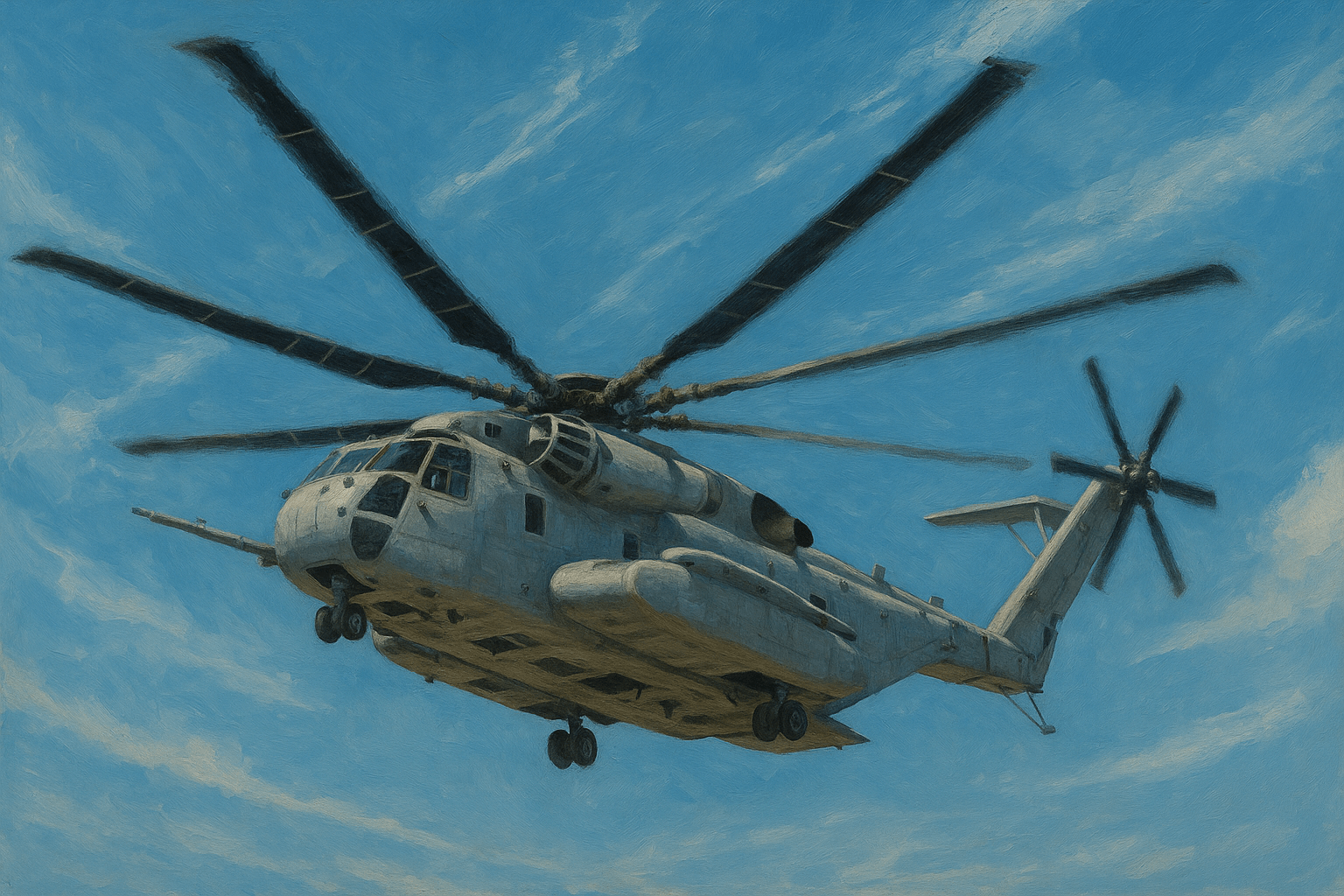Col Kate Fleeger on the King Stallion
The CH-53K King Stallion could represent a significant enhancement in Marine Corps heavy-lift capabilities, but its true potential will only be realized if users embrace transformational thinking rather than viewing it as merely an upgraded CH-53E, according to a top NAVAIR official.
In a July 2025 interview, Col. Kate Fleeger, Program Manager for H-53 Heavy Lift Helicopters at NAVAIR, emphasized that the aircraft embodies a fundamental shift in Marine heavy-lift operations, mission planning, and force sustainment. Such a shift challenges traditional paradigms while unlocking new operational possibilities.
Fleeger identified a critical challenge facing the program: overcoming the perception that the CH-53K is simply the “next version” of the CH-53E Super Stallion.
“What contributes to that challenge is the fact that we called it the CH-53K instead of going with something wholly different, the fact that we made it look a lot like a 53 Echo,” Fleeger explained. “I think it actually encourages, unfortunately, people to view the platform as a replacement platform instead of a revolutionary, key element of a really forward-thinking concept of operations.”
The CH-53K’s larger engines, advanced avionics, and greater payload capacity don’t just improve existing capabilities. They enable entirely new operational concepts. Where the CH-53E required extensive preparation and carried significant risk when lifting 20,000-pound loads, the CH-53K handles such operations routinely, fundamentally changing how ground commanders plan missions.
The Service Level Training Exercise (SLTE) at 29 Palms, California in January 2025 provided the kind of crucial operational experience that is needed to overcome old mindsets. HMH-461 deployed six CH-53K aircraft in a comprehensive test of both machine and Marine capabilities.
The exercise wasn’t simply about demonstrating lift capacity — it explored what becomes possible when technological limitations disappear. The most striking demonstration was a full company insert conducted entirely with CH-53K aircraft, dramatically reducing both operational signature and timing required for major troop movements. This capability delivers critical advantages in contested environments where speed and fewer lift elements determine mission success.
Key exercise outcomes included testing increased lift and range in contested logistics scenarios, enabling Marines to develop new tactics and procedures, and demonstrating that building confidence in the platform requires human adaptation alongside machine performance.
Perhaps the most significant advancement lies in the CH-53K’s integrated mission planning ecosystem. This system encompasses both cockpit technologies and ground-based planning stations, creating seamless integration throughout the Marine Air-Ground Task Force (MAGTF). This approach asks planners to start with the problem, not the platform, and imagine what missions are now possible.
“Planning is as important as execution,” Fleeger noted, describing how the system represents a paradigm shift from aircraft-centric planning to truly integrated operational design.
The CH-53K’s digital architecture generates unprecedented operational data, but Fleeger cautioned that the need to transform this information into actionable knowledge is a critical challenge. The aircraft continuously collects data that could revolutionize supply chain management, but only if organizational systems evolve to process and act on these insights.
“Data is no good to anybody if you can’t move that data throughout the ecosystem and analyze it in such a way that you turn it into actionable information,” she explained. The goal is creating seamless flow from aircraft-generated data to demand signals that inform industrial partners about parts requirements in advance or shifting from reactive maintenance to predictive sustainment.
There are some key upcoming milestones for the King Stallion. The 20th aircraft delivers to VMX-1 at Yuma in August 2025; HMHT-302 at New River is transitioning to become the formal training squadron; and, multi-year contracts for lots 9-13 will be awarded by September 2025, securing production through fiscal year 2029.
Fleeger’s comments on the multi-year production contract are further underscored in U.S. Navy and Marine Corps official budget justifications.
Looking ahead, she advocates for developing standardized “roll-on, roll-off” payload systems that would establish common size, weight, and power parameters for rapid integration of new capabilities. “Give the fleet operators a box, and whatever you can fit in this box with this weight and power, will allow for rapid innovation in operational approaches,” she explained.
The CH-53K represents a microcosm of broader military transformation challenges. Like the F-35’s evolution from traditional fighter to information node, the King Stallion’s journey demonstrates how platform-centric thinking must evolve toward capability-based approaches.
When combined with F-35 sensing capabilities and Osprey versatility, the CH-53K creates operational possibilities that extend far beyond individual platform capabilities. This integration enables flexible deployment of Marine Corps forces using the totality of Marine aviation to deliver various payloads across the force.
The CH-53K’s legacy will be written not just by its enhanced capabilities, but by how it shapes possibilities for future Marines, realizing the promise of digital aviation in an era of major power competition and global disorder.
This article was first published on Breaking Defense on August 21, 2025.
The featured image was generated by an AI program.
For a podcast discussing the CH-53K and this article, see the following:
CH-53K King Stallion: Reshaping Marine Corps Heavy Lift Operations

